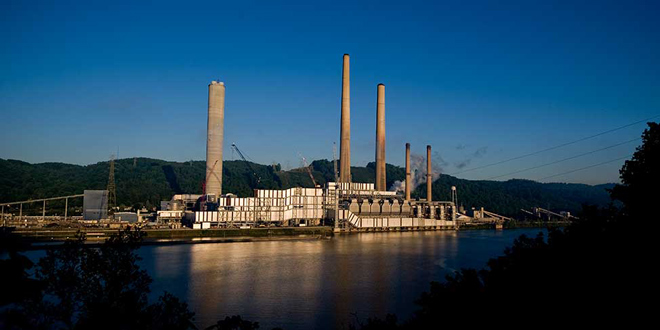By Suzanne Herel
FirstEnergy will retire four units at its largest coal-fired power plant in Ohio and sell or deactivate its Bay Shore plant by 2020, the company said Friday, citing “challenging market conditions.”
Together, the units represent 856 MW, of which 136 MW is generated by Bay Shore in the City of Oregon, Ohio. Units 1-4 of the seven-unit W.H. Sammis Plant in Stratton produce 720 MW. The remaining two units there will continue to provide 1,490 MW of baseload generation.
The 78 employees at Bay Shore would be offered jobs elsewhere in FirstEnergy if that plant were deactivated, and the company would work with any potential buyer to arrange their retention. Likewise, the 368 employees at Sammis would be offered other job opportunities, the company said.
Last year, the units headed toward closure or sale generated 4% of the electricity produced by all of FirstEnergy’s plants.
“We have taken a number of steps in recent years to reduce operating costs of our generation fleet,” FirstEnergy Generation President Jim Lash said in a statement. “However, continued challenging market conditions have made it increasingly difficult for smaller units like Bay Shore and Sammis Units 1-4 to be competitive. It’s no longer economically viable to operate these facilities.”
The announcement comes as the staff of the Public Utilities Commission of Ohio has proposed a rider for FirstEnergy that would allow it to recover $131 million annually from customers over three to five years so it may retain an investment-grade credit rating as it struggles to maintain some of its aging, mostly coal-fired plants. (See PUCO Staff Recommends $131M Annual Rider for FirstEnergy.)
FERC in April had ruled that an eight-year power purchase agreement PUCO had approved for FirstEnergy, and another for American Electric Power, would be subject to federal review. The ruling prompted FirstEnergy to return to PUCO with a modified proposal that commission staff said should be rejected in favor of the recommended rider.
FirstEnergy’s announcement was welcomed by environmental advocates who had denounced the company’s power purchase request as a corporate bailout.
“Closing these outdated, dirty power plants not only shows FirstEnergy finally recognizes the market momentum toward coal’s inevitable demise, the decision is great news for Ohio customers, who avoid paying a massive subsidy to keep the units afloat,” said Dick Munson of the Environmental Defense Fund.
According to the Sierra Club, FirstEnergy’s announcement brings the total amount of coal generation that has retired or is set to retire in the state since 2010 to 10,093 MW.
“Today’s announcement is further proof that Sammis is an outdated and costly coal plant that customers should not be forced to prop up,” said Shannon Fisk of Earthjustice. “We will continue to fight efforts that could be used to bail out other FirstEnergy coal units, as now is the time for significant investments in renewable energy, energy efficiency and grid modernization activity that will create jobs and economic development throughout Ohio.”
Bay Shore Unit 1, whose boiler is fueled by petroleum coke, went online in 2000. Units 2-4 were deactivated in 2012 because of environmental regulations.
Units 1-4 at Sammis date to 1959 through 1962. Units 5-7 came online from 1967 to 1971.
According to FirstEnergy, it pays $1.7 million annually in Bay Shore property taxes. The company pays more than $7 million in property taxes on the Sammis plant, making it the largest taxpayer in Jefferson County.



